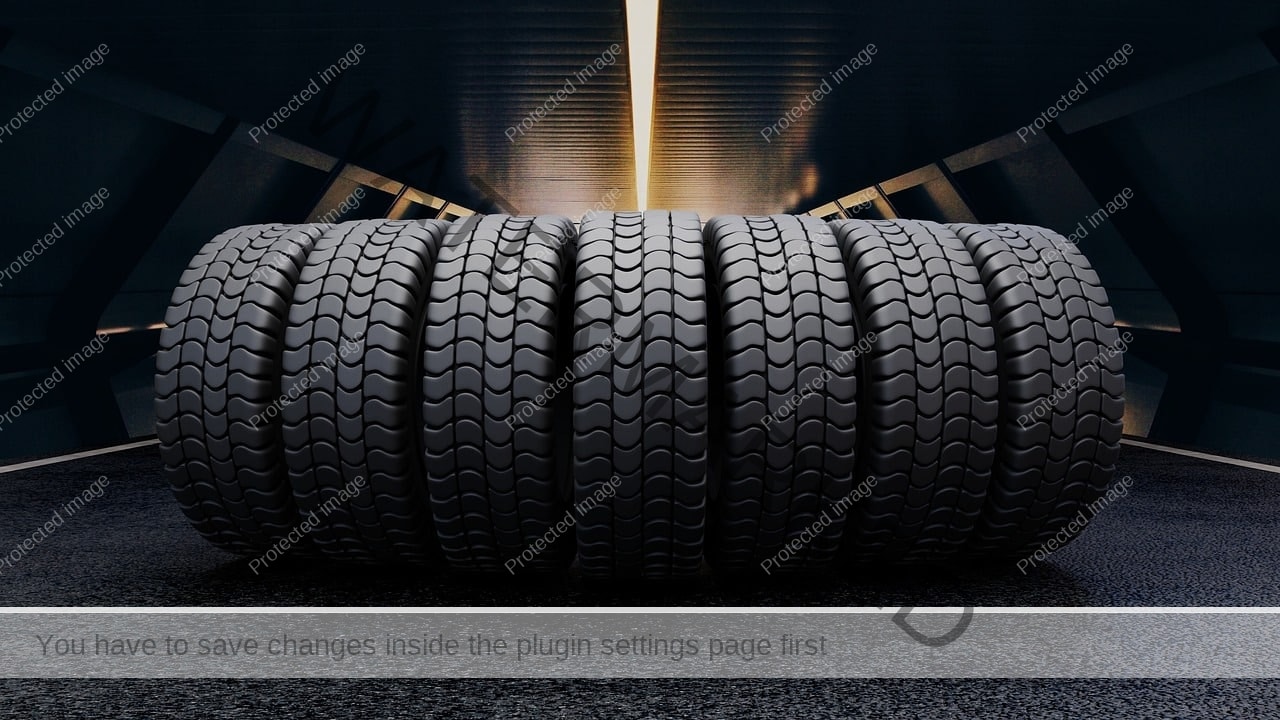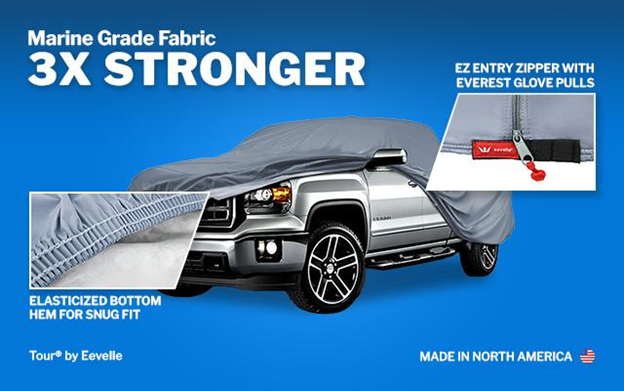When purchasing new tires, understanding ply ratings can be a key factor in your decision. This article explains the meaning of these terms, their evolution and current relevance, as well providing vehicle owners with an accessible explanation on this topic.
What is the Tire Ply rating?
Ply ratings were originally used to describe the number of layers (usually cotton) that made up a tire. The tire can carry more weight by adding a ply. Each layer increases the weight-bearing capability and resistance to pressure. In modern tire technology, tire layers are no longer counted. Instead, ply ratings are used to determine strength and durability.
Importance Of Ply Ratings In Different Vehicle Types
The ply rating is a key factor in determining tire strength and durability across a wide range of vehicle types. Understanding these ratings is important for ensuring safety, performance and durability of your tires.
Passenger Cars
Ply ratings for passenger cars indicate the tire’s sidewall strength and load carrying capacity. The majority of passenger car tires are rated 4 or 6. These ratings are ideal for city and highway driving. They provide a balance between comfort, fuel economy, and adequate load support.
Trucks
Tires with a higher ply rating are often required for trucks, particularly those that are used commercially. These ratings are usually between 8 and 10, which provide the strength needed to handle heavy loads and frequent usage. Tires with a high ply rating for trucks are more resistant to punctures, and provide better stability. This is important for the safety and efficiency of transporting goods.
Heavy Duty Vehicles
Heavy-duty vehicles such as trucks, buses and construction equipment require the highest ply rating, which is typically between 12 and 16 or even more. These tires are designed to handle extreme temperatures, heavy loads and rigorous usage. These tires have high ply ratings, which ensures they can be used safely and effectively. They also reduce the risk of tire failures leading to accidents or expensive downtime.
How To Choose The Right Ply Rating For Your Vehicle
- Determine Your Vehicle Type: First, determine whether your vehicle belongs to the passenger car, truck or heavy-duty category. This will help you narrow down your range of ply rating options.
- Determine Your Use: Determine your vehicle’s primary purpose. If you drive in rough terrains or carry heavy loads, choose tires with higher ply ratings. Standard ply ratings are sufficient for city driving.
- Manufacturer Recommendations: Always consult your vehicle’s owner’s manual. The manufacturer’s guidelines will provide you with the recommended tire specifications including the ply rating.
- Assess Driving Conditions: Take into account the driving conditions that you are likely to encounter. For added safety and durability, off-road driving, hauling long distances, and highway travel at high speeds may require higher ply rating.
Understanding and selecting the correct ply ratings will ensure that your vehicle runs efficiently, safely and reliably no matter what demands are placed on it.
Load Range Introduction
The load range is the maximum weight a tire will safely support with proper inflation. It is directly related to a tire’s ply rating, and higher ratings usually lead to a greater range. Modern materials can allow for fewer physical plies while still maintaining strength. This allows for a greater range of load capacity. The letters B, C, D E F indicate the tire load ranges. This allows consumers to easily identify what they need based on their vehicle and load requirements.
Chart of Ply and Load Range
| Load range | Ply Rate |
| B | 4 Ply |
| C | 6 Ply |
| D | 8 Ply |
| E | 10 Ply |
| F | 12 Ply |
History of Tire Plies
Cotton was originally used as a natural fiber in tire ply designs to increase the capacity of carrying loads and durability. However, as material science progressed, manufacturers began to use synthetic fibers, such as nylon polyester and steel, which provided greater strength. This change led not only to better tire performance but also to the modernized Ply Ratings System, which represented current technology.
Factors affecting tire ply ratings
It is important to make informed decisions when selecting tires by understanding the factors that affect tire ply rating. Tire ply ratings influence tire strength, load capability, and overall performance.
Road Conditions & Driving Habits
- Road Surface
- Smooth Asphalt: Lower ply ratings (6-8) are sufficient for vehicles that are driven primarily on well-maintained, smooth roads. These tires provide a smooth ride with a good level of durability.
- Unpaved or Rough Roads: If you drive frequently on unpaved or rough roads or in off-road situations, a higher ply rating (8 or more) is necessary. These tires are more resistant to damage and punctures caused by sharp objects or rough surfaces.
- Driving Frequency & Load
- Vehicles with Light Loads or Infrequent Use: Vehicles which are used infrequently and carry light loads do not need high ply ratings. Tires with a standard ply rating (4-6) can be used for this type of usage.
- Frequent Use and Heavy Loads: Tires with higher ply numbers are better suited for vehicles that carry heavy loads regularly or use them frequently. It is especially important for trucks and commercial vehicles.
Climate Conditions and Weather Conditions
- Extremes of Temperature
- Hot climates: High temperatures may cause tires to overheat and lead to blowouts. Tires with higher ply rating are recommended in hot climates as they are stronger and better equipped to handle heat.
- Cold Climates: In colder areas, tires with winter ratings and higher ply rating are required to maintain flexibility and perform in low temperatures.
- Precipitation Changes and Seasonal Changes
- Wet Condition: In areas with frequent rainfall, tires should have a high ply rating and good traction to be able to handle slippery surfaces. They must also perform well in wet weather.
- Snow and Ice: Winter tires with the appropriate ply rating are required for regions that experience snow and ice. These tires have been designed to provide grip and durability even in the harshest winter conditions.
How climate and weather conditions affect Ply ratings
The best tire performance is achieved by selecting the appropriate ply rating for your climate and weather.
- Hot Climates: Choose a higher ply rating to counter the effects of high temperatures.
- Cold Climates: Ensure that tires are rated for winter and have the appropriate ply strength. This will ensure performance and safety during adverse weather conditions.
- Climate Variable: In areas with seasonal variations, you may want to consider different tires, with a ply rating that is appropriate for the season.
You can choose the best ply rating for your vehicle by considering road conditions, driving patterns, and climate. This will improve its safety, performance, longevity, and durability.
Modern Advances in Tire Technology
The introduction of synthetic materials has dramatically changed tire construction. Modern tires are stronger and more durable than ever before, allowing them to achieve higher ply rating and load ranges. They also require fewer layers, while being lighter and more energy efficient.
When buying new tires, it is important to understand the relationship between ply rating and load range. These metrics are used to determine the performance of a tire under different driving conditions, and with various loads. They also provide safety and efficiency for vehicles of all kinds. Understanding ply rating will help you make informed decisions about replacement tires and selecting new ones that are tailored to specific driving conditions. If you need assistance in selecting tires, contact us! Our tire experts can make sure that you’re ready to hit the road!




1 thought on “What does Ply mean on tires? Tire Ply Ratings: An Overview”
Thanks for sharing. I read many of your blog posts, cool, your blog is very good.